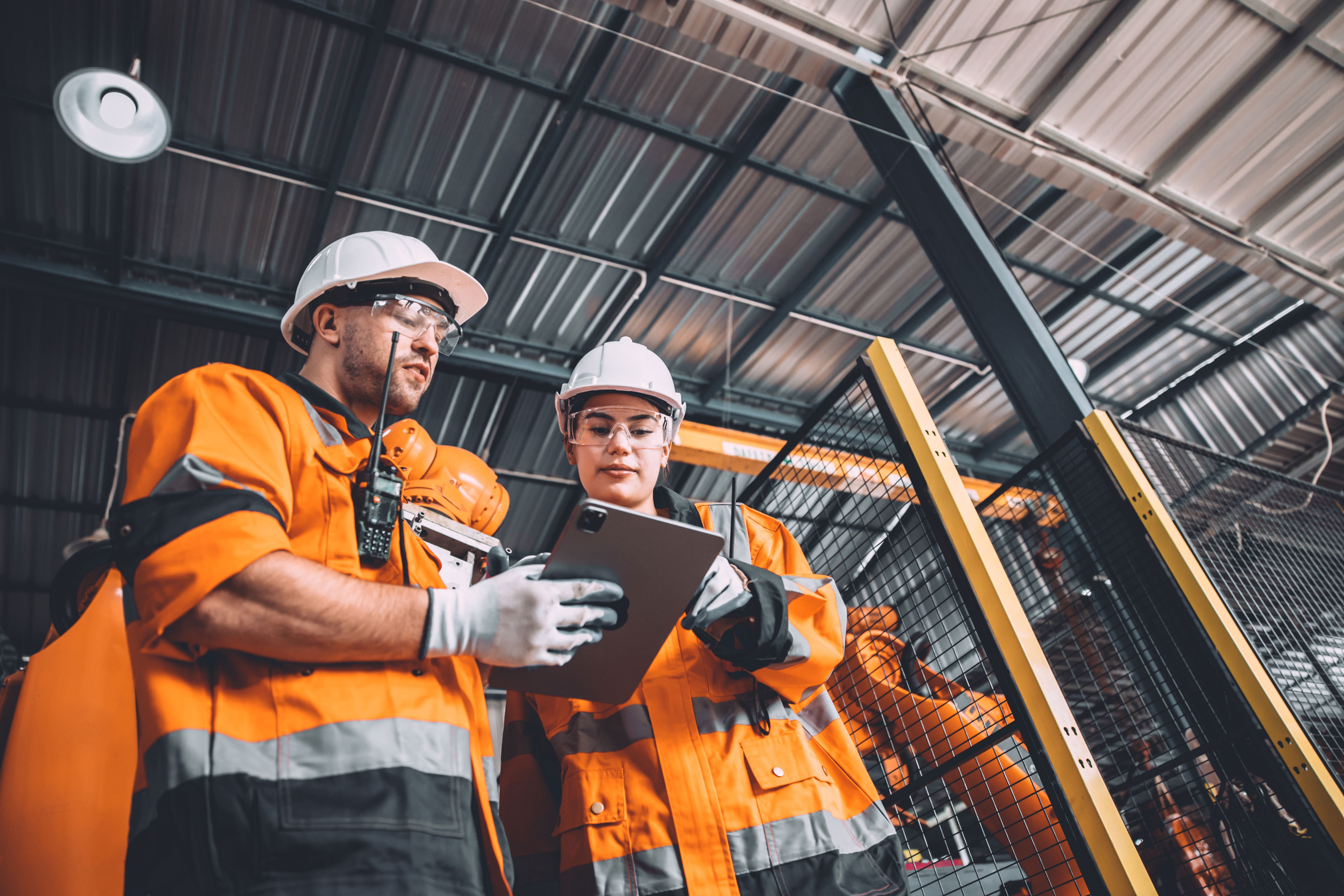Cultivating a Safety-First Culture in the Painting Industry

Give Us A Call With Any & All Questions, Or For Your Free No Obligation Estimate 503-389-5758
Key Features:
- Open Communication and Proactive Prevention: Encouraging workers to voice safety concerns and addressing risks proactively ensures a safer work environment.
- Regular Training and Clear Policies: Consistent safety training and clear, enforced policies are essential for maintaining a high standard of safety.
- Management's Role in Leading Safety: Active participation and investment in safety by management are crucial for building and sustaining a safety-first culture.
Welcome to Lightmen Daily: Where Safety Meets Artistry!
Hello, painting professionals and enthusiasts! Today on Lightmen Daily, we delve into a crucial aspect of the painting industry: fostering a safety-first work culture. This isn't just about compliance; it's about cultivating a mindset where safety leads every decision. If you're passionate about creating a secure and efficient workplace, subscribe now and embark on this transformative journey with us!
"I am a culture, not a country, a mindset, not a rule, and I protect more than I punish. What am I?"
Answer below
The Essence of a Safety-First Culture
In the painting world, each brushstroke carries a responsibility towards safety. Embedding a safety-first approach in every job aspect requires a fundamental shift in mindset.
Building a Culture of Openness
- Open Communication: Encouraging workers to voice concerns about hazards is crucial. An environment where employees feel comfortable speaking up about potential risks leads to early identification and mitigation of dangers.
- Proactive Prevention: Every identified risk is an opportunity to enhance safety. By addressing hazards before they cause harm, you foster a proactive approach to safety management.
Empowering Workers as Safety Champions
Empowerment is the cornerstone of a safety-first culture, transforming workers into advocates of collective well-being.
- Recognizing Safe Practices:
- Training in Risk Identification: Enabling workers to recognize and address potential dangers is essential. Regular training sessions can equip your team with the knowledge to identify risks and take appropriate action.
- Rewarding Safety: Acknowledging and valuing safe practices boosts motivation and adherence. Implementing a reward system for safety compliance and proactive behavior can reinforce the importance of safety.
Regular Training and Robust Safety Policies
Consistent training and clear policies form the backbone of a safety-focused work environment.
- Ongoing Education: Regular training sessions keep safety protocols fresh in employees' minds. These sessions should cover new risks, updated regulations, and practical safety tips relevant to current projects.
- Clear and Enforced Policies: Robust safety policies provide a framework for expected behaviors and procedures. Ensuring these policies are clearly communicated and consistently enforced helps maintain a high standard of safety across all operations.
The Benefits of a Safety-First Culture
Creating a safety-first culture involves more than just adhering to safety guidelines. It’s about embedding safety into the core values of your company, where every team member prioritizes safety in their daily tasks. This approach leads to fewer accidents, higher efficiency, and a more motivated workforce.
Reduced Accidents and Injuries
When safety is prioritized, the likelihood of accidents and injuries decreases significantly. This not only protects employees but also reduces downtime and associated costs, leading to smoother operations and higher productivity.
Increased Employee Morale
A workplace that prioritizes safety shows employees that their well-being is valued. This can lead to higher job satisfaction, increased loyalty, and a more positive work environment.
Enhanced Reputation
Companies known for their strong safety practices are often more attractive to clients and employees alike. A reputation for safety can be a competitive advantage, helping to win contracts and attract top talent.
"Our painting team has a safety-first culture. Even the paintbrushes wear little helmets!"
Keeping Safety Front and Center
A safety-first culture transcends accident prevention. It enhances job satisfaction, fosters team unity, and boosts productivity. Here’s how to embed safety into every aspect of your painting projects.
Engaging Training Sessions
Engaging training sessions are crucial for embedding safety into the company culture. These sessions should cover everything from personal protective equipment (PPE) usage to emergency procedures.
- Comprehensive PPE Training: Ensure that every team member knows how to properly use, maintain, and store their PPE. This not only protects them but also prolongs the life of the equipment. I recall a time when we conducted an extensive PPE training session at Lightmen Painting, and the immediate reduction in minor injuries was remarkable.
- Emergency Preparedness: Regularly train your team on emergency procedures, including fire drills, first aid, and evacuation plans. A well-prepared team can respond swiftly and effectively in an emergency, minimizing risks and potential injuries. During one of our sessions, a simple fire drill practice turned into a valuable lesson when we identified and corrected evacuation route issues.
Living Safety Policies
Safety policies need to be clear, accessible, and consistently enforced to be effective. It’s not enough to have these policies in place—they need to be lived and breathed by everyone in the organization.
- Clear Guidelines: Make sure your safety guidelines are easy to understand and readily available to all employees. Consider creating a safety handbook that outlines all procedures and protocols. At Lightmen Painting, we distributed a safety handbook to every team member, which quickly became an essential reference tool.
- Consistent Enforcement: Enforce safety policies uniformly across all levels of the organization. Inconsistent enforcement can lead to confusion and non-compliance, undermining the safety culture. I’ve found that having regular safety audits helps maintain a high standard and keeps everyone accountable.
Management's Pivotal Role in Leading Safety
Management sets the tone for safety culture. Their active involvement and commitment are crucial in building a secure environment.
Leading by Example
- Investing in Safety: Providing the right tools and meeting safety standards is fundamental. Ensure that your team has access to high-quality safety gear and that all equipment is regularly inspected and maintained. I remember a significant upgrade we made at Lightmen Painting, replacing old ladders with new, safer models. The investment paid off immediately with a noticeable drop in ladder-related incidents.
- Active Participation: Engage in safety discussions and lead by example. When managers and supervisors actively participate in safety initiatives and adhere to the same standards as their team, it reinforces the importance of these practices. I often join our team on-site, not just to oversee but to participate in safety checks, which boosts morale and emphasizes our commitment to safety.
The Far-Reaching Benefits of a Safety-First Culture
A safety-first approach transcends accident prevention, significantly impacting job satisfaction and productivity. Here’s how:
A Happier, More Productive Team
- Increased Focus and Engagement: Safe workers are more dedicated, leading to higher quality work. When employees feel secure in their environment, they can focus better on their tasks without the distraction of potential hazards. This heightened focus translates into more meticulous and efficient work.
- Enhanced Team Cohesion: Safety fosters a sense of care and unity among the team. When safety is a shared priority, it encourages team members to look out for each other, building stronger interpersonal relationships and a more supportive work environment.
In Our Experience:
"Embedding a safety-first culture has transformed our operations. I recall a time when we introduced a comprehensive PPE training program. The immediate drop in minor injuries was remarkable, and the team’s morale skyrocketed. By actively participating in safety initiatives and investing in top-notch safety gear, we’ve not only protected our workers but also enhanced our overall productivity and reputation. Creating a culture where safety is paramount has truly made a difference in our daily work and long-term success. "
The Far-Reaching Benefits of a Safety-First Culture
A safety-first approach transcends accident prevention, significantly impacting job satisfaction and productivity. Here’s how:
A Happier, More Productive Team
- Increased Focus and Engagement: Safe workers are more dedicated, leading to higher quality work. When employees feel secure in their environment, they can focus better on their tasks without the distraction of potential hazards. This heightened focus translates into more meticulous and efficient work.
- Enhanced Team Cohesion: Safety fosters a sense of care and unity among the team. When safety is a shared priority, it encourages team members to look out for each other, building stronger interpersonal relationships and a more supportive work environment.
Engaging Training Sessions
Engaging training sessions are crucial for embedding safety into the company culture. These sessions should cover everything from personal protective equipment (PPE) usage to emergency procedures.
- Comprehensive PPE Training: Ensure that every team member knows how to properly use, maintain, and store their PPE. This not only protects them but also prolongs the life of the equipment.
- Emergency Preparedness: Regularly train your team on emergency procedures, including fire drills, first aid, and evacuation plans. A well-prepared team can respond swiftly and effectively in an emergency, minimizing risks and potential injuries.
Living Safety Policies
Safety policies need to be clear, accessible, and consistently enforced to be effective. It’s not enough to have these policies in place—they need to be lived and breathed by everyone in the organization.
- Clear Guidelines: Make sure your safety guidelines are easy to understand and readily available to all employees. Consider creating a safety handbook that outlines all procedures and protocols.
- Consistent Enforcement: Enforce safety policies uniformly across all levels of the organization. Inconsistent enforcement can lead to confusion and non-compliance, undermining the safety culture.

Management's Pivotal Role in Leading Safety
Management sets the tone for safety culture. Their active involvement and commitment are crucial in building a secure environment.
Leading by Example
- Investing in Safety: Providing the right tools and meeting safety standards is fundamental. Ensure that your team has access to high-quality safety gear and that all equipment is regularly inspected and maintained.
- Active Participation: Engage in safety discussions and lead by example. When managers and supervisors actively participate in safety initiatives and adhere to the same standards as their team, it reinforces the importance of these practices.
Keeping Safety Front and Center
- Engaging Training Sessions: Covering everything from PPE usage to emergency procedures, engaging training sessions ensure that safety is always a priority. These sessions should be interactive and encourage participation to make the learning process more effective.
- Living Safety Policies: Clear, accessible, and consistently enforced guidelines are essential for maintaining a safety-first culture. Regularly review and update these policies to address new risks and incorporate feedback from the team.
Action
If you’re looking for professional assistance or more expert tips on fostering a safety-first culture in your painting business, visit Lightmen Painting. Our experienced team can help you implement effective safety strategies that protect your employees and enhance your operations. Don’t hesitate to reach out for personalized advice and high-quality painting services.
Do You Have Questions? Give Us A Call With Any & All, Or For Your Free No Obligation Estimate 503-389-5758
-
People Also Ask:
How can I foster a safety-first culture in my painting business?
Fostering a safety-first culture involves open communication, proactive prevention, regular training, and robust safety policies. Encourage employees to voice concerns about hazards and conduct regular safety training sessions.
What are the benefits of a safety-first culture in the painting industry?
A safety-first culture reduces accidents and injuries, increases employee morale, and enhances the company's reputation. This leads to higher productivity, smoother operations, and a more motivated workforce.
How can management lead by example in promoting safety?
Management can lead by example by investing in high-quality safety gear, participating in safety discussions, and adhering to safety standards. Active involvement from management reinforces the importance of safety practices.
-
SUBSCRIBE TO OUR BLOG: Stay informed with the latest in Painting and DIY projects by subscribing to Lightmen painting. Get insights, tips, and more delivered straight to your inbox. We would also love to know what you would like to read about, leave thoughts on where we should go next. Interests, Topics, Ideas, all are welcome.
"In the palette of workplace culture, safety is the primary color."
Answer: Safety-first culture
If your in the Portland, Or. area and need advice or a free no obligation estimate call us at 503-389-5758 or email scheduling@lightmenpainting.com
Local Shout Out:
Celebrating Bridgeport Village: A Premier Shopping and Entertainment Destination
From the team at Lightmen Painting, we celebrate Bridgeport Village, a premier destination for shopping, dining, and entertainment in Tigard, Oregon. Much like our commitment to excellence in painting services, Bridgeport Village offers an exceptional experience with its upscale boutiques, fine dining options, and vibrant atmosphere. This open-air lifestyle center not only supports local commerce but also serves as a social hub for the community, reflecting our mission to enhance and beautify the spaces where people gather.
Thanks for stopping by Lightmen Daily! Stay tuned for more practical tips and expert advice on making your painting projects flawless, from wall to floor!
Definitions
- Safety-First Culture: A work environment where safety is the top priority, integrated into every aspect of operations.
- Open Communication: Encouraging employees to speak up about safety concerns without fear of repercussions.
- Proactive Prevention: Identifying and addressing potential hazards before they cause harm.
- Risk Identification: The process of spotting potential safety hazards in the workplace.
- PPE (Personal Protective Equipment): Equipment worn to minimize exposure to hazards that cause serious workplace injuries and illnesses.
- Emergency Preparedness: Training and planning for emergency situations to ensure a swift and effective response.
- Safety Policies: Guidelines and procedures put in place to maintain a safe working environment.
- Safety Training: Regular sessions aimed at educating employees about safety practices and protocols.
- Employee Morale: The overall outlook, attitude, satisfaction, and confidence that employees feel at work.
- Management Participation: The involvement of company leaders in promoting and adhering to safety standards.
Lightmen Painting Serving: Portland, Tigard, Lake Oswego, Tualatin, West Linn, Milwaukie, Sherwood, Happy Valley, Oregon City, Beaverton, Hillsboro, Gresham


